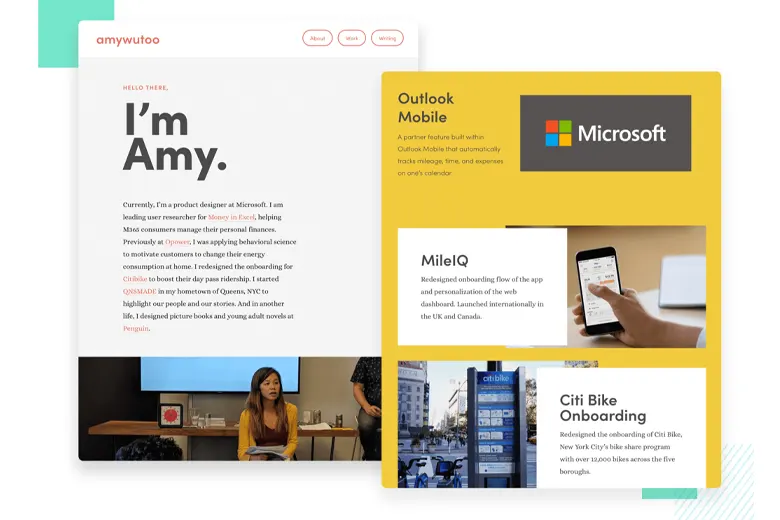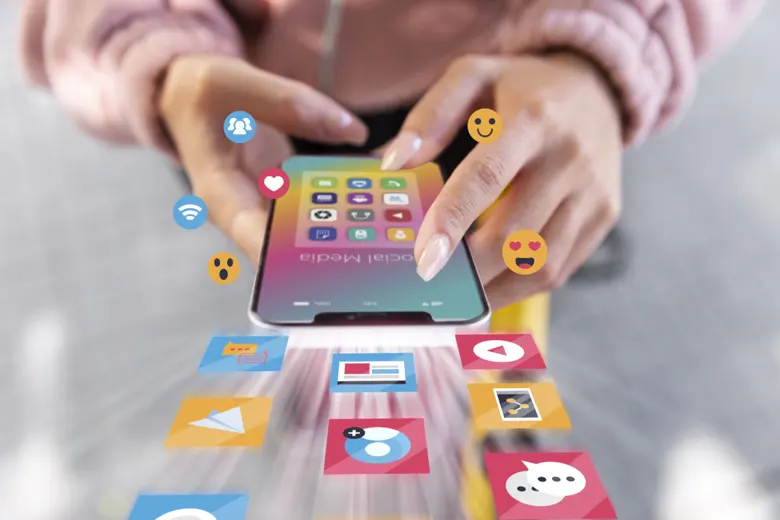If you’re looking to secure a UX design internship and start off your career on a good note, this step-by-step guide might be just what you need.
A UX design internship is where you will get a sense of how things are done in a professional setting. If you are closer to completing your design course and are wondering how to get a UX design internship, then you’re in the right place.
In this comprehensive guide, we’ll cover everything, including the benefits of a UX design internship, things to keep in mind, and tips for preparing for the interview. We’ve got all the answers and advice you need to find and land a UX design internship that will set you off on the right path in your UX design career.
Here’s a clickable list of everything that we’ll be covering in this article!
Contents:
- What Are the Benefits of a UX Design Internship?
- Things To Consider Before Starting a UX Design Internship
- When To Start Applying for a UX Design Internship?
- Steps to Landing a UX Design Internship
- Where to Find a UX Design Internship?
- How to Apply for a UX Design Internship?
- How to Prepare for UX Design Internship Interviews?
- Final Thoughts
What Are the Benefits of a UX Design Internship?
Before getting into the process of securing a UX design internship, let’s take a look at the numerous benefits that such an experience can offer. Here are some benefits that will serve you well in the long run:
1. Mentorship Under Experts

Image Courtesy: Mentorloop
One of the key benefits of a UX design internship is the opportunity to work under the mentorship of seasoned professionals and learn how to implement your knowledge while working on live projects. This experience allows you to observe their workflow, ask questions, receive constructive feedback, and apply their insights to your own projects. It also helps you gain exposure to various aspects of UX, including research, design, testing, and evaluation, while learning how to integrate them into real-world scenarios. Learning from experts can enhance your knowledge, sharpen your skills, and build your confidence as a UX designer.
2. Developing Skills
Skill development is another crucial aspect that helps you acquire expertise in a diverse set of techniques and tools. By working through various design stages like user research, wireframing, prototyping, and usability testing, you expand your technical skills and gain a deeper understanding of how these elements can be combined to create a seamless user experience. This hands-on experience allows you to apply theoretical knowledge to actual projects, helping you develop skills that equip you with the proficiency needed to tackle complex design challenges.
3. Creating an Impressive Portfolio

Image Courtesy: Justinmind
During your internship, you’ll have the chance to work on a variety of projects that can demonstrate your skills, creativity, and problem-solving abilities. By highlighting the projects you’ve completed, you can illustrate your design process, outcomes, and the impact you made. Documenting your learnings, challenges, and achievements will provide a comprehensive view of your experience. Building a portfolio that is filled with such experiences will increase your potential of being hired by future employers or clients.
4. Building a Strong Network

A UX internship gives you the chance to connect with other UX professionals, mentors, peers, clients, and users, enriching your experience and knowledge. Attending industry events, workshops, and meetups further broadens your horizons and helps you stay informed about the latest trends and resources. By building a strong network, you can gain exposure, recognition, and support for your career goals while also uncovering new opportunities in the field.
Things To Consider Before Starting a UX Design Internship
Before starting your search for a UX design internship, take some time to reflect and ask yourself some important questions. This will help you focus on applying to organizations that align with your values and can be beneficial for your career. Additionally, consider preparing for common UX designer interview questions to better understand the expectations and prepare effectively for interviews.
1. What Type or Size of Company Do You Want To Work For?
The skills you pick up during an internship can vary significantly depending on the type and size of the company you work for. Interning at a smaller organization or start-up often allows you to be involved from the very beginning of a product or idea up to its final draft and subsequent iterations. In such settings, you might take on more responsibility and have closer interactions with the end users of your product.
On the other hand, interning at a larger company, like Google or Adobe, offers the opportunity to work with bigger teams and learn from various industry professionals. You’ll likely have access to more advanced resources and tools and get a glimpse of how the UX design process operates on a larger scale.
In addition to the size of the organization you intern for, it’s just as important to understand the type of company and how it operates. Here are the details of various types of companies that you might want to consider:
Design Agency
If you’re looking to gain holistic experience with different clients and industries during your internship, then a design agency could be an excellent fit for you. Design agencies offer a fast-paced environment that exposes interns to a wide range of projects and design challenges. UX interns often work with multiple clients across different industries, which helps them develop a broad skill set and build expertise in adapting their design approach to meet diverse needs.
Interns at such agencies also work closely with experienced designers, developers, and other professionals, gaining exposure to real-world projects. The opportunity to contribute to client-focused projects makes design agencies an excellent training ground for aspiring UX designers.

Startup
If you’re interested in working in a fast-paced, innovative environment, consider applying for an internship at a startup. You’ll likely have the opportunity to take on various roles and work on different aspects of projects.
Startups are ideal for UX interns because they provide hands-on, impactful experience. Interns often handle significant responsibilities, contributing directly to product development and shaping user experiences from the start. With smaller teams, you’ll have more visibility and direct access to decision-makers, which can accelerate your learning and growth. Additionally, the entrepreneurial mindset at startups makes it a great fit for those interested in pursuing a freelance career or launching their own business.
Corporation
Interning at a large corporation offers the benefit of working on complex projects with extensive resources, allowing you to contribute to high-impact products and services that reach large audiences. Corporations often provide structured training programs and mentorship, which can improve your learning experience. These opportunities can also lead to long-term career growth within the organization, making it an excellent choice for those seeking career stability.
2. Are You Looking for a Paid or Unpaid Internship?
Internships may be either paid or unpaid, depending on your country’s legislation regarding unpaid work and the company’s policies. Before applying, consider which type of role fits your current situation, including the internship’s duration. While a short-term or part-time unpaid internship might be manageable, a longer or full-time unpaid position may not be financially viable.
Make sure to review all internship details before applying, including the salary (if offered), weekly hours, and duration. Also, it’s worth asking if there is a possibility of transitioning into a paid junior position once the internship ends. For further insights, refer to our complete guide to UI/UX designer salaries.
3. Do You Want to Specialise or Work in a Particular Industry?
If you want to work in a particular industry or specialization, consider narrowing down your options to specific companies that offer relevant experience. Having hands-on experience in your desired field before applying for junior positions can significantly increase your chances of bagging a job that suits your career goals. You may want to consider specializations such as responsive design, UI design, interaction design, VR and AR design, and accessibility design and explore industries like tech, e-commerce, gaming, government, finance, and healthcare.
When to Start Applying for a UX Design Internship?
The application process for an internship typically takes about four months, with several interview rounds and tasks during the selection process. Generally, securing an internship in this field takes some time, so it’s best to start searching and applying well in advance. Apply at least six months ahead or sooner before your desired starting date. For example, if you aim to begin your internship in autumn 2025, you should start exploring opportunities by the end of February at the latest.
Steps to Landing a UX Design Internship

Image Courtesy: Medium
After identifying the industry, area of specialization, and type of company that interests you, you’re well-prepared to start the process of finding and applying for your first UX design internship. Let’s go over the steps you need to follow.
1. Develop Relevant Skills
Focus on mastering design tools like Sketch, Adobe XD, Figma, or InVision. Additionally, deepen your understanding of research techniques, design principles, wireframing, prototyping, and usability testing methods. Once you’ve acquired these skills, implement your learning by redesigning a well-known brand’s app or website, going through each stage of the design process, and documenting your improvements. This hones your skills and provides a tangible project for your internship interviews.
2. Freelance on Small Projects
Working on small projects is one of the best ways to apply the theory you’ve learned to real-life design problems. Consider designing an app or website for a product or service idea. Start by interviewing potential users to understand their needs, analyze your competition to identify opportunities, design wireframes, and create prototypes. Test these prototypes with family or friends, and take note of any areas that could be improved. Throughout the process, familiarise yourself with the tools you’ll be expected to use as part of a design team, gaining as much hands-on experience as possible.
3. Build a Social Media Presence

Image Courtesy: Sagara Technology
Displaying your UX knowledge on social media platforms like LinkedIn, Instagram, or your website can be a subtle yet impactful way to build your personal brand and impress employers. Sharing posts of prominent UX designers and voicing your opinion about the latest prototyping tools shows your commitment to staying up-to-date in the field. Highlighting your interest in UX design beyond the classroom lets employers know that you are passionate about your career and eager to learn.
4. Publish Your Portfolio
After completing your projects, the next step is to create a portfolio to share with potential employers. A well-crafted UX Design portfolio allows you to showcase your work and document your skills and processes. Include case studies, wireframes, prototypes, and user personas that can effectively highlight your abilities. Aim to demonstrate your versatility and keep your portfolio up-to-date by regularly updating your work samples as you gain experience. Consider using portfolio website builders like Notion, Behance, Dribble, Wix, or WordPress to create and maintain your portfolio.
5. Prioritise Networking
Use LinkedIn To Build a Professional Network
LinkedIn is a platform designed to help users find career opportunities, including internships. Create your profile, fill in the necessary details, and ensure it is visible to recruiters and hiring managers. Display your resume and online portfolio and provide an easy way for others to view your credentials. Follow the companies you’re interested in interning with to stay updated on their latest job openings and connect with their employees. Additionally, use LinkedIn to network by messaging and engaging with other professionals in the industry.
Attend Networking Meetups and Conferences
Attending UX design events is a valuable way to connect with fellow designers. Engaging in meaningful interactions with other UX students and professionals can deepen your understanding and provide insights into their experiences in the field. Networking at these events can also open doors to potential internship opportunities through connections you make.
6. Engage With Your Online Community
While attending in-person networking events is great, online design communities can be equally beneficial. Connect with other UX designers, design studios, agencies, and influencers on platforms like YouTube, Medium, Twitter, and other social media platforms. Exploring Facebook groups for UX designers in your region is another effective way to network from home. This approach can help you discover internship opportunities while staying updated on the latest trends and ideas in design.
Where to Find a UX Design Internship?
Finding the right UX design internship can be a daunting process. To help you secure a paid or unpaid internship, here are some reliable and trusted sources:
Indeed
As one of the largest job search engines globally, Indeed offers a dedicated section for UI/UX jobs and internships. Its user-friendly interface allows you to search for opportunities based on location, preferred company, or specific internship type.
LinkedIn is a well-known professional network that connects professionals across all domains worldwide. You can easily search for internships based on your location, preferred type, and work model (hybrid, remote, or on-site).
Glassdoor
Glassdoor is another trustworthy platform for finding UI/UX internships, offering company reviews, salary information, and interview insights directly from current employees.
How to Apply for a UX Design Internship?
Read on to understand what exactly you need to do before applying for a UX design internship:
1. Identify Companies and Opportunities
Look for potential employers who offer opportunities in industries or specializations you’re passionate about, such as tech, e-commerce, gaming, or healthcare. Leverage job boards and platforms like LinkedIn, Indeed, Glassdoor, and industry-specific sites like Behance or UXfolio to find internship listings and filter your search accordingly.
Connect with experts in the UX field through networking events, conferences, and online platforms. Seek recommendations and insights about potential internship opportunities from your network. If you’re a student, take advantage of career services and internship programs offered by your college or university.
2. Visit Company Websites and Submit Applications
Customize your resume, cover letter, and portfolio to specific internship applications, highlighting relevant skills and experiences. Visit the company careers page or job opportunities section on the websites you’re interested in and read the job descriptions carefully. Make it a point to follow application instructions provided by each company and submit it through their preferred method, which could be through an online portal, email, or a recruitment platform. Also, highlight your unique selling points that set you apart from other candidates, particularly the skills or experiences that align with what the company needs.
3. Track and Follow-Up On Submissions
Keep a record of the companies you’ve applied to, including the application date and any relevant deadlines. Regularly check your email and application portals for responses from potential employers. Some companies may provide a timeline for when you can expect to hear back. If you haven’t received a response within the timeframe indicated in the job posting or after a couple of weeks, consider sending a polite follow-up email. Reiterate your interest in the position and inquire about the status of your application.
If you’re contacted for an interview, review the company’s background, prepare answers to common interview questions, and practice discussing your portfolio and relevant experiences.
How to Prepare for UX Design Internship Interviews?

Interviews can be nerve-racking especially when it’s your first one in a new field. Here are a few actionable tips to help you excel in your interview and leave a lasting impression.
Know your projects inside out
Ensure that you know all the details of the projects in your portfolio. Reflect on the reasons behind your design decisions and acknowledge factors like time constraints and team effort that influenced your projects. Be honest and avoid fabricating any processes.
Walk the interviewer through your process
Highlight the design challenges you overcame, showcase the projects you’re most proud of, and share insights into your design process.
Do your research
Before the interview, ensure you have enough knowledge about the company, its products, and its design philosophy.
Showcase your collaboration skills
Employers are always keen to understand how you function in a team. Recall times when you collaborated closely with other teams, and discuss projects where you faced communication gaps, explaining how you resolved them. You can also share instances where you didn’t succeed and reflect on how you would handle those situations differently now.
Refresh your knowledge of UX methodologies
Be ready to discuss your experience with user research, wireframing, and usability testing and how you’ve applied these techniques in your work.
For more inspiration, explore this UX/UI design Task-Based Application case study by AND learner Yash Ramdas to gain valuable insights for your UX internship portfolio.
Final Thoughts
In this article, we’ve taken you through the steps that a UX design graduate needs to take to prepare for and succeed in a design internship. From working on freelance projects and building a personal brand to reaching out to your network and creating a portfolio, these tips will ensure that you find a UX design internship that suits your personal interests and professional goals in no time.
If you’d like to find out more about UX design, check out AND Academy’s blog, for more useful UX design resources and insights.
What’s Next
Alternatively, if you want to dive deeper into creating a resume to help crack a UI UX internship, here’s a blog you can read: How To Create an Impressive UX Designer Resume.
Also, check out this curated selection of additional resources that may be of interest:
- Watch this session by Shiva Viswanathan, Design Head of Ogilvy Pennywise, and Naman Singh, Product Experience Designer at RED.
- Talk to a course advisor to discuss how you can transform your career with one of our courses.
- Pursue our UI UX Design courses – all courses are taught through live, interactive classes by industry experts, and some even offer a Job Guarantee.
- Take advantage of our scholarship and funding options that come with our courses to overcome any financial hurdle on the path of your career transformation.
Note: All information and/or data from external sources is believed to be accurate as of the date of publication.









